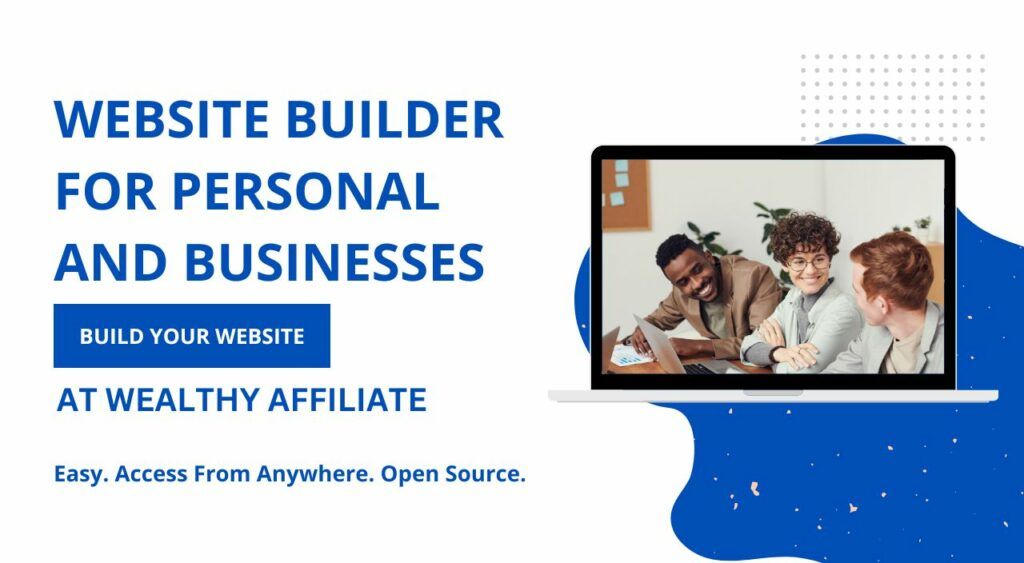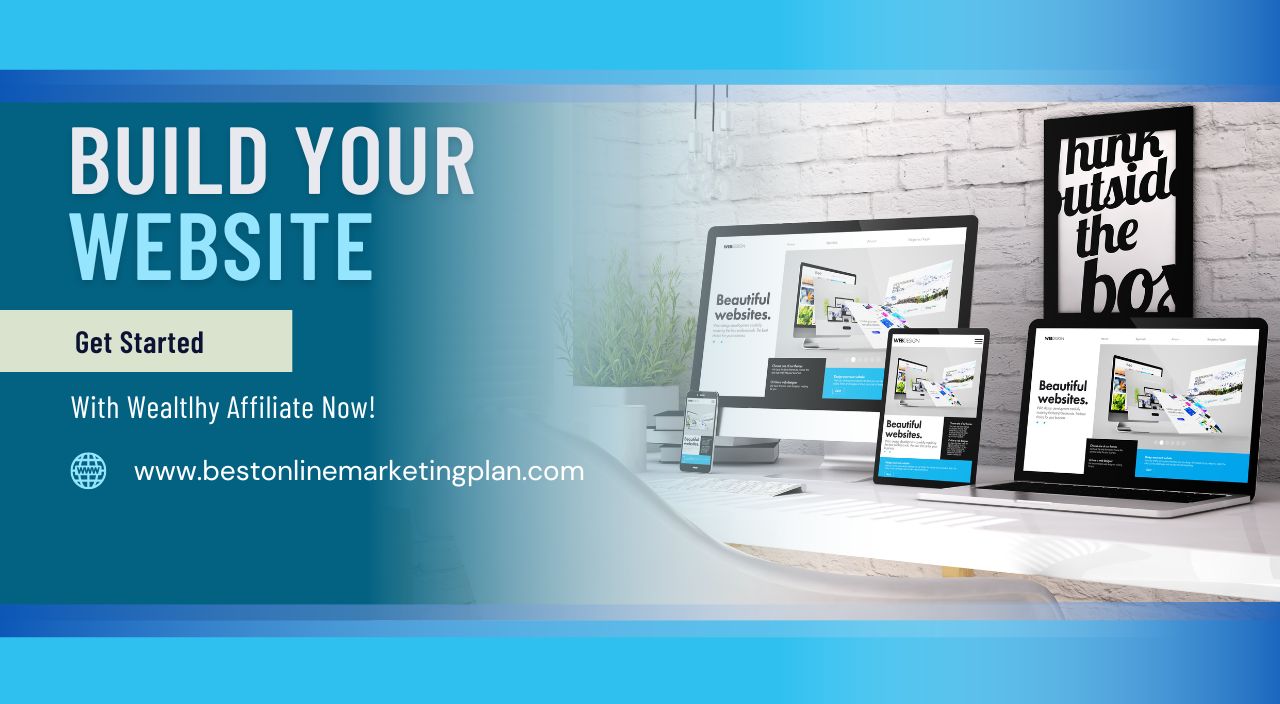Introduction
If you’re thinking about starting an online business, having a professional website is crucial. A good website showcases your products or services and builds trust with your customers. To create your website, you’ll need to learn basic programming, how to upload and download files (FTP), and some Photoshop skills. You’ll also need a working computer.
If you want a website without too much hassle, WordPress is your best bet. It’s an open-source platform, meaning its code is free to use and modify. WordPress makes it easy to create websites, but you’ll still need to find hosting, an FTP application, and basic technical support skills, which you can learn as you go.

WordPress is great for beginners wanting to create websites or blogs. However, it does require some effort and research to master. With time and practice, you’ll get the hang of it.
Another option is “Wealthy Affiliate.” This platform allows you to create a website with just a few clicks. You can customize it exactly how you want, from themes to content. Plus, the community is there to help you navigate the platform. You get access to all the tools needed for a successful online business without paying for a premium membership if you’re not ready.
In this guide, I’ll walk you through the steps to build a fantastic website, even if you’re a beginner. Let’s dive in!
Choosing a Domain Name
Tips for Selecting a Memorable Domain
The first step in building your website is choosing a domain name. This is the address people will use to find your site, like www.example.com. Here are some tips to help you pick a great domain name:
- Keep it short and simple: A short, easy-to-remember name is best.
- Make it easy to spell: Avoid using complicated words or unusual spellings.
- Use keywords: Include words that describe your business to help with search engine optimization (SEO).
- Avoid numbers and hyphens: These can be confusing and hard to remember.
- Check availability: Make sure the domain name you want is available and not already in use.
Importance of Domain Extensions
Domain extensions are the suffixes at the end of web addresses, like .com, .net, or .org. Here are some common ones and their uses:
| Domain Extension | Use Case |
| .com | General/business websites |
| .net | Network-related websites |
| .org | Nonprofit organizations |
| .edu | Educational institutions |
| .gov | Government websites |
| .co | Company or community websites |
Choosing the right extension can help convey the purpose of your website to visitors.
Selecting a Web Hosting Provider
Types of Web Hosting
Web hosting is where your website lives on the internet. There are different types of hosting to choose from:
- Shared Hosting: Multiple websites share the same server. It’s affordable but can be slower if other sites get a lot of traffic.
- VPS Hosting: Virtual Private Server hosting offers more resources and control than shared hosting. It’s good for growing websites.
- Dedicated Hosting: Your website gets its own server. It’s the most expensive option but offers the best performance.
- Cloud Hosting: Your site is hosted on multiple servers, making it very reliable and scalable.
Factors to Consider When Choosing a Host
When picking a web host, consider these factors:
- Speed: Fast loading times improve user experience and SEO.
- Uptime: Look for a host that guarantees at least 99.9% uptime.
- Support: Choose a host with 24/7 customer support.
- Scalability: Make sure the host can grow with your business.
- Security: Ensure the host provides strong security features to protect your site.
Website Design and Layout
Essential Elements of a Good Design
A well-designed website attracts visitors and keeps them engaged. Here are some key elements to focus on:
- Clean and Simple Layout: Avoid clutter and keep the design straightforward.
- Easy Navigation: Make it easy for visitors to find what they’re looking for with clear menus and links.
- Responsive Design: Ensure your site looks good on all devices, from desktops to smartphones.
- High-Quality Images: Use clear, professional images that represent your brand.
- Consistent Branding: Use the same colors, fonts, and styles throughout your site to create a cohesive look.
User Experience and Navigation
User experience (UX) is all about how visitors interact with your site. Good UX makes it easy and enjoyable for people to use your site. Here are some tips:
- Keep Load Times Short: Fast-loading pages keep visitors from leaving.
- Use Clear Calls to Action (CTAs): Buttons and links should clearly tell visitors what to do next, like “Buy Now” or “Sign Up.”
- Make Information Easy to Find: Use headings, bullet points, and short paragraphs to make your content easy to read.
- Provide Contact Information: Make it easy for visitors to contact you with questions or feedback.
Creating Quality Content
Importance of High-Quality Content
Content is what fills your website and keeps visitors coming back. High-quality content is informative, engaging, and valuable to your audience. It helps you build trust and establish authority in your industry.

Types of Content to Include
There are many types of content you can include on your website:
- Blog Posts: Regular updates on topics relevant to your audience.
- Product Descriptions: Detailed information about the products you sell.
- Images and Videos: Visual content can make your site more engaging.
- Customer Testimonials: Reviews from happy customers can build trust.
- FAQs: Answer common questions to help visitors find information quickly.
Search Engine Optimization (SEO)
Basic SEO Practices
SEO helps your website rank higher in search engine results, making it easier for people to find you. Here are some basic practices:
- Use Relevant Keywords: Include keywords in your content that people might use to search for your products or services.
- Optimize Titles and Meta Descriptions: These appear in search results and should be clear and enticing.
- Create High-Quality Backlinks: Get other reputable sites to link to yours.
- Optimize Images: Use descriptive filenames and alt text for your images.
- Improve Site Speed: Faster sites rank higher and provide a better user experience.
On-Page and Off-Page SEO Techniques
On-Page SEO includes optimizing elements on your website:
- Title Tags: Include keywords in your titles.
- Meta Descriptions: Write compelling descriptions with keywords.
- Headings: Use H1, H2, and H3 tags to structure your content.
- Internal Links: Link to other pages on your site.
Off-Page SEO involves activities outside your website:
- Backlinks: Earn links from other reputable sites.
- Social Media: Share your content on social media platforms.
- Guest Blogging: Write articles for other blogs in your industry.
Integrating Social Media
Connecting Your Website with Social Platforms
Social media can drive traffic to your website and help you reach a larger audience. Here’s how to integrate it:
- Add Social Media Buttons: Make it easy for visitors to share your content on social media.
- Embed Social Media Feeds: Show your latest posts from platforms like Instagram or Twitter.
- Use Social Media for Customer Support: Answer questions and engage with customers on social media.
Benefits of Social Media Integration
Integrating social media with your website offers several benefits:
- Increased Traffic: Social media can bring new visitors to your site.
- Improved SEO: Social signals can help improve your search engine rankings.
- Enhanced Engagement: Interact with your audience and build a community.
- Brand Awareness: More people will learn about your business.
Analyzing Website Performance
Tools for Tracking Website Metrics
To improve your website, you need to track its performance. Here are some tools to help you:
- Google Analytics: Tracks visitor behavior, traffic sources, and more.
- Google Search Console: Monitors your site’s presence in Google search results.
- SEMrush: Analyzes your SEO performance and tracks keywords.
- Hotjar: Provides heatmaps and visitor recordings to see how people interact with your site.
Using Data to Improve Website Performance
Once you have data, use it to make informed decisions:
- Identify Weak Points: Find pages with high bounce rates or low conversion rates and improve them.
- Test Changes: Use A/B testing to see what changes work best.
- Track Progress: Continuously monitor your metrics to see if your changes are working.
Conclusion
Building a great website is like laying a strong foundation for your online business. Start by choosing the right domain name and selecting a reliable hosting provider. Focus on designing a user-friendly layout that makes navigation easy for your visitors. Create high-quality content that engages your audience and keeps them coming back. Optimize your site for search engines to increase visibility and attract more traffic.
Don’t forget to integrate social media to broaden your reach and keep an eye on your site’s performance to make ongoing improvements.
The Benefits of Being a Part of This Community
Joining a supportive community can make the process even easier. Here are some benefits:
- Making Your Websites: You don’t have to follow the file transfer protocol (FTP), meaning you can avoid the hassle of transferring files between client and server.
- Automatic Setup: The platform sets up your database for you, so there’s no need to do it yourself.
- No Need for Photoshop: You won’t need Photoshop for your layouts.
- Cost Savings: There’s no need to buy expensive applications to improve your website.
- Simplified Management: You don’t need to worry about domain registrars, DNS, HTML, or PHP.
- Quick Launch: Your website will be up and running in just a few minutes, complete with everything you need.
- Training and Support: The community offers videos to train and help you navigate your site, with live chats available for support.
- Free Hosting: You don’t have to pay anything for hosting your website.
For more details, check the video below for a thorough explanation on how to set up your own site.
By following these steps and taking advantage of community resources, you’ll be well on your way to creating a successful online presence.
So How Can You Join This Community?
- Sign up on a starter account in “Wealthy Affiliate” all for FREE!
- Create the website you have been longing for.
One thing to be reminded of is that since it’s all free, a lot of members are also running their own website, thus, internet traffic is unavoidable. But fret not, that’s just normal.
Also, once you have your site running already, don’t forget to advertise it by sharing it with your family members, friends, and people you think who would also take interest in making their own free site.
Feel free to ask for help if you need one. Once you completed your site you can ask or get some help from the community of marketer’s inside wealthy affiliate.

